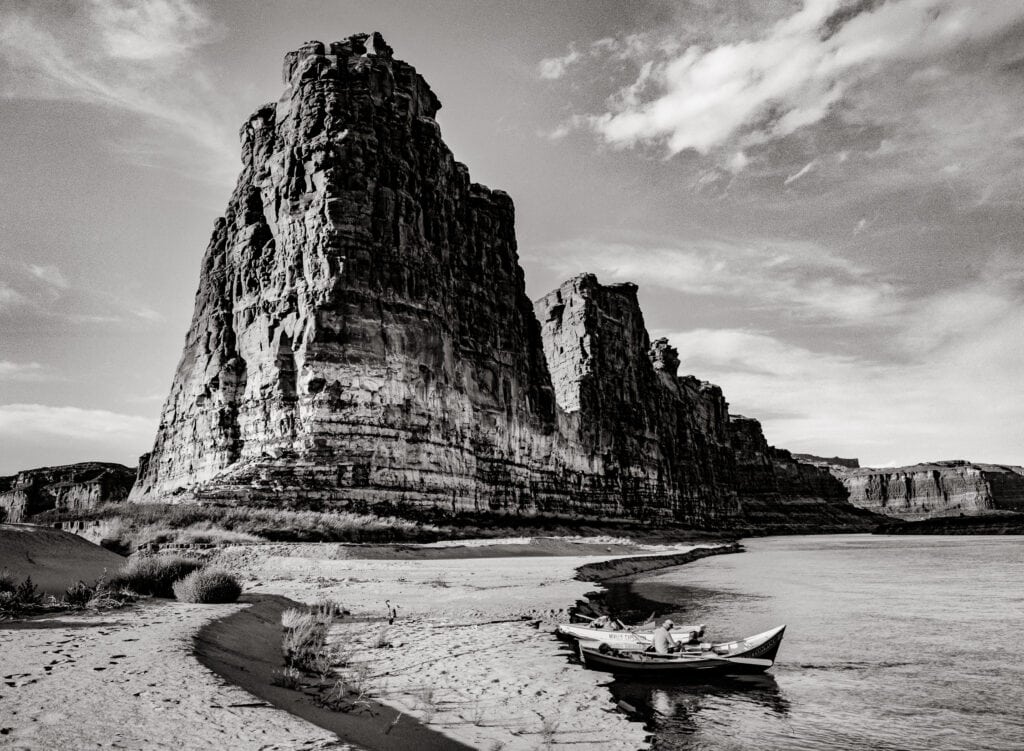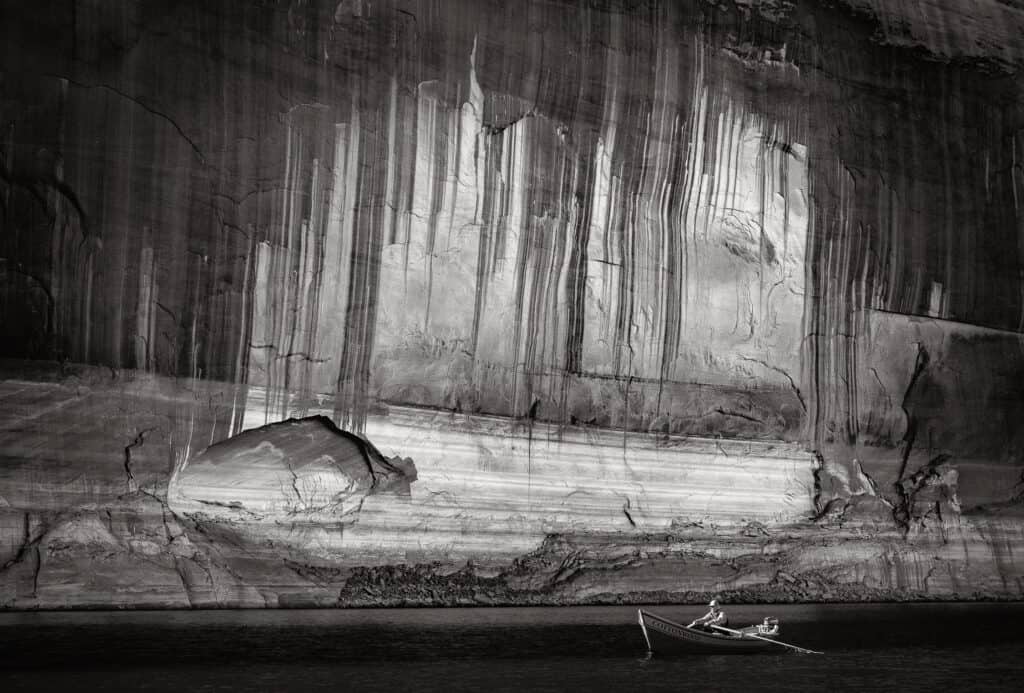Armed with an old Crown Graphic 4×5 camera, Flagstaff-based filmmaker Dawn Kish documented her exploration of Glen Canyon as it emerged from the retreating waters of Lake Powell in the film “Tad’s Emerging World: Glen Canyon Exposed,” which was screened as part of the 30th annual Sedona International Film Festival.
Photographer and conservationist Tad Nichols described Glen Canyon as “like a paradise, a garden of Eden,” and other environmental advocates have referred to it as America’s “lost national park.” The completion of Glen Canyon Dam in 1966 formed Lake Powell, which subsequently inundated the canyon with water and sediment.
“This place is so gigantic, Glen Canyon is 200 miles, and then you have the reservoir, which is [1,960] miles of shoreline,” Kish said. “It’s really hard to get a grasp on Glen Canyon because it’s still a reservoir and it’s still buried.

“What I explored was not really Glen Canyon, but … there was these tiny little glimpses through side canyons and features … [like] Cathedral in the Desert, but it’s buried again.”
Richard Jackson, who printed Nichols’ photos, gave Kish Nichols’ 4×5 Crown Graphic camera, which she has since christened “Tad.”

“I was so scared that I would break this thing, [it’s] a relic, this created history,” Kish said. Nichols used the camera to shoot his seminal 1999 book “Glen Canyon: Images of a Lost World,” which was released shortly before his death in 2000.
“Working for the Sierra Club and the Bureau of Indian Affairs, Nichols’ artistic photographs provide one of the most extensive historical portraits of Glen Canyon before the dam,” the Grand Canyon Trust’s website states. “The book is out of print, but it contains the best photographic documentation of what many consider the most beautiful canyon system in the Southwest.”
“This wasn’t undertaken intentionally at all, it was just kind of an accident and an effect of climate change,” journalist Zak Podmore, who is collaborating with Kish, said. “I’ve been thinking about what’s happening in Glen Canyon as, in a strange way, a positive climate change story. Obviously, it’d be a lot better if we’re able to stop climate change. “But there are these surprising side effects, and one of them is that the overallocation of water in the Colorado River Basin and the warming climate has revealed huge sections of Glen Canyon for the first time since they were flooded in the ’60s. Those are places that you don’t have to imagine what they were like, you can go out and explore them and they’re pretty healthy, and they’ll continue to get more ecologically [healthy] as they get more of a chance to recover.”
Kish started filming in September 2021 when reservoir levels were at an historic low, and added that while she never met Nichols, she started writing imaginary letters to him in her diary during production.
“I was just trying to channel him, which is a very Sedona thing to say,” Kish said. “I wanted the film to be heartfelt, so I was writing to him because I was very inspired by his book … when I look at it, I’m still in awe. I’m so inspired by [Nichols] and [folk singer] Katie Lee and Frank Wright, the ‘We Three’ — that’s what they called these three people who tried to save Glen Canyon on their own, and that just didn’t happen.”
Podmore said that he doesn’t view the future of Glen Canyon as being “doomed.”

“Glen Canyon is showing the potential and concrete ways to recover,” Podmore said. “In the spring of 2023, over 100,000 acres of land that were once flooded by Lake Powell were re-exposed, and all of those places were experiencing recovery at different rates. I think it’s super-exciting, and that was a big inspiration for my book. And I know [Kish] for her photo project was inspired by seeing some of these places come back as well.”
Kish and Podmore will appear the Museum of Northern Arizona on Saturday, March 16, at 3 p.m. as part of the “The Glen Canyon Rises: An Art and Advocacy Tour,” which includes a screening of “Tad’s Emerging World” along with a presentation by Podmore on the future of Lake Powell and a musical performance by Jackson Emmer and Peter McLaughlin.
“This place was buried, homes were buried, [the] archaeology was buried,” Kish said. “So if I can show how beautiful this canyon is to people, and bring back a little bit of that knowledge to people, they might fall in love with it, too, and try to protect these wild places. I show that through my art, because that’s the only way I can do it. That’s the only way I know how to tell stories.”
For more information about the event, visit musnaz.org.



